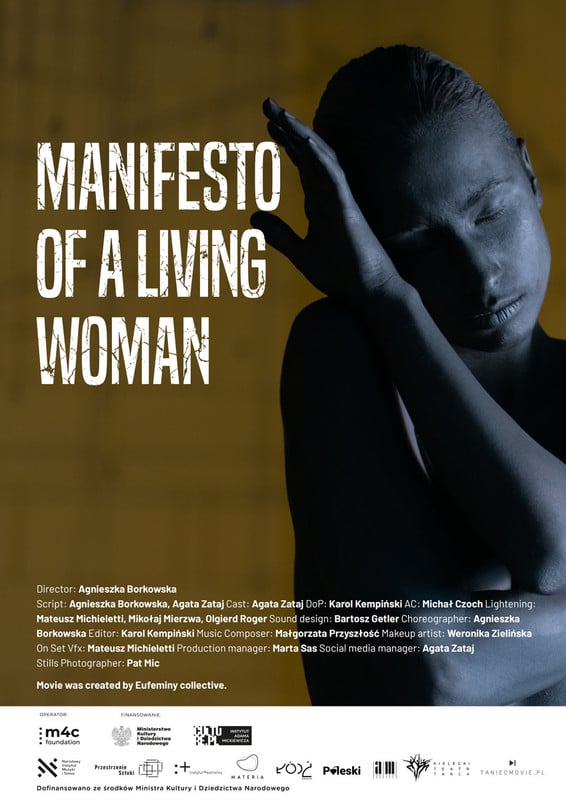
The story begins with the protagonist being fascinated by “Danaid”, a sculpture by A. Rodin. For years it seemed to only tell us about the beauty of the female body, but only recently have we discovered the hidden story about suffering. The main themes of the etude became the roles imposed on women by culture and traditions, which were captured in sculptures of Rodin’s “Gates of Hell” – there, we found a Woman Drowning in Embarrassment, a Fallen Woman and a Beautiful Woman. Manifesto’s protagonist solidifies each of those roles to, eventually, make an attempt to escape, tearing off all the layers of demands set for her gender. The need to create this performative protest appeared in 2020, during the intensification of protests against the tightening of abortion law in Poland. Still, there is a struggle for women’s rights on many fronts and our participation gives the spotlight to the protagonist – a woman, a Pole. We ask: who are you, who do you want to be, if you can be more than tradition allows, if your body is not an object in a political game? ‘Manifesto of Living Woman’ does not have a fabular structure, it is rather a flow of impressions, images created in authors’ imagination. The dance appeared to be the soundest, most reasonable way to tell the story of the protagonist’s struggles, due to its figurativeness and variety of interpretations.
